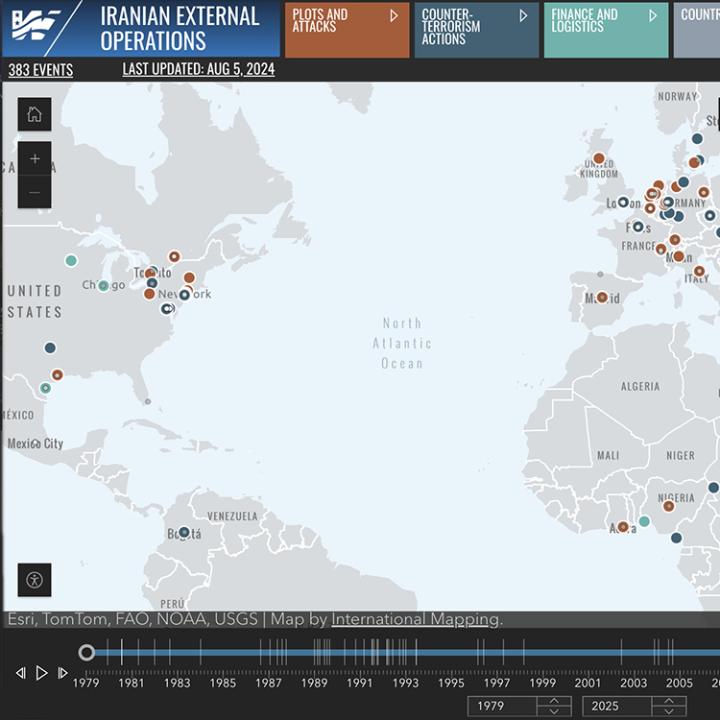
- Policy Analysis
- Interviews & Presentations
Iranian External Operations Interactive Map and Timeline

Access this powerful tool, which maps over forty-five years of Iranian clandestine operations around the globe.
Over the past forty-five years, agents and proxies of the Islamic Republic of Iran have targeted Iranian dissidents and journalists, diplomats from countries opposed to Iranian policies, as well as Israelis and Jews in assassination plots, attempted abductions, intimidation campaigns, and surveillance operations. Iran has carried out these operations around the world, in countries with both strong and weak law enforcement, intelligence, and border control agencies. And it has done so consistently, including in circumstances when taking such actions could undermine Iranian diplomatic efforts, such as negotiations over the country’s nuclear program.

In recent years, Iranian reliance on these external operations as tools of intimidation, revenge, and deterrence has spiked, leading governments from the United States, Britain, and Sweden, among others, to decry the regime’s aggressive plots on foreign soil.
Iran has pursued such plots since the earliest days after the 1979 Islamic Revolution. One of the first such cases on U.S. soil occurred in July 1980, when Iranian agents recruited David Belfield, aka Dawud Salahuddin, an American convert to Shia Islam, to assassinate former Iranian diplomat Ali Akbar Tabatabai in Bethesda, Maryland. Later, in a 1997 briefing, Ambassador Philip Wilcox, the U.S. State Department’s coordinator for counterterorrism, stated that “since 1990, we estimate—and indeed, we have solid information—that Iran is responsible for over 50 murders of political dissidents and others overseas.”
READ THE FULL INTRODUCTORY ESSAY
The current map tool shines a bright spotlight on activities Iran goes to great lengths to obfuscate, using cutouts such as proxy groups and criminals to complement its own stable of operatives and diplomats to engage in murder, abduction, intimidation, and surveillance around the world. The map is not a comprehensive compilation of Iranian external operations, however, since many of these remain classified. For example, the map does not include the more than fifty murder plots between 1990 and 1997 referenced by Ambassador Wilcox. But it does represent the first open-source repository of Iranian external operations of its kind, and officials who cover these matters and have access to classified sources—from the United States to Europe to the Middle East—have confirmed that the findings here parallel their own.
This is an interactive project to which entries will be added on an ongoing basis, both to keep up with current events and to backfill past entries as information and source material become public.




